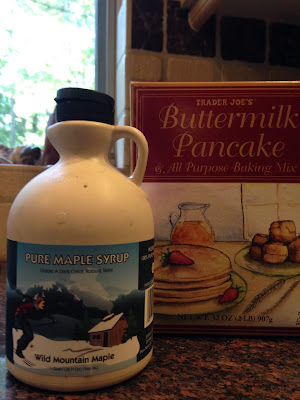“Mom, where does maple syrup come from?” my son, who is four, asks me.
“Maple trees,” I answer.
“Nuh-uhhh . . . “
“Really, it does.”
We have these discussions all the time. Milk comes from cows?
“You mean like pee?”
“Not quite.” And luckily there is a demonstration cow in the 4-H barn at the Marshfield Fair that helps to explain the milking process.
Eggs come from chickens? Carrots grow from seeds? Where does chocolate come from?
I really enjoy answering these questions (most of the time) and teaching Abel about food sources. It’s especially fun if we can actually go somewhere and see food production in action. So we have visited farms throughout the growing season, greenhouses, chicken coops and dairy barns. Next on our list: Matfield Maple Farm in West Bridgewater.
It’s maple season here in Massachusetts. As the weather warms, the frozen sap inside maple trees begins to melt. Pressure builds up inside the trees, and before long it’s ready to burst out . . . through any fresh wound in the tree.
Maple producers know that freezing nights and warm sunny days create optimal conditions for harvesting sap. In February, they tap their sugar maples by drilling a small hole in each trunk and inserting a spout. Then they attach something under the tap to catch the sap – generally a bucket or a tube. The sap, which is clear, drips from the tree.
Later, maple growers bring the sap to the sugarhouse, where they boil it in an evaporator. Much of the water content is removed and what’s left is the concentrated, sweet, brown syrup that we like to pour on our pancakes. It takes about forty gallons of sap to make a single gallon of syrup.
You can see all of this first-hand at Matfield Maple Farm in West Bridgewater. On weekends in season, the farm offers walking tours – a quarter-mile hike through their woods, where the trees are tapped and plumbed and sap is collected in tanks. On the tour, you’ll learn about old and new maple sugaring traditions, as well as the history and science of maple production. You can also visit their resident llamas, and purchase tree taps, syrup, and maple candy at their gift shop. Be sure to wear your boots, as it can be muddy.
Tours, which begin promptly at 12 and 2 PM, are offered on Saturdays and Sundays in February and March for $5 per person. Reservations are not required. Matfield also welcomes groups of any age. Visit www.matfieldmaplefarm.com for details.
You can also learn about maple sugaring at the South Shore Natural Science Center’s annual Maple Day, held this year on Sunday, March 13 from 11 AM to 4 PM in Norwell. Drop in anytime to learn about maple history and culture, and to taste different varieties. You will be invited to walk through the woodland, help tap the Science Center’s maple trees, and watch as the sap is boiled into syrup. The event also includes crafts and activities for children. Admission to the EcoZone is included in the price ($5 for members, $8 for non-members, with a maximum of $32 for non-member families). For more information, visit www.ssnsc.org.
By Kezia Bacon-Bernstein, Correspondent
February 2011
Kezia Bacon-Bernstein’s articles appear courtesy of the North and South Rivers Watershed Association, a local non-profit organization devoted to the preservation, restoration, maintenance and conservation of the North and South Rivers and their watershed. For membership information and a copy of their latest newsletter, contact NSRWA at (781) 659-8168 or visit www.nsrwa.org. To browse 13 years of Nature (Human and Otherwise) columns, visit http://keziabaconbernstein.blogspot.com.

